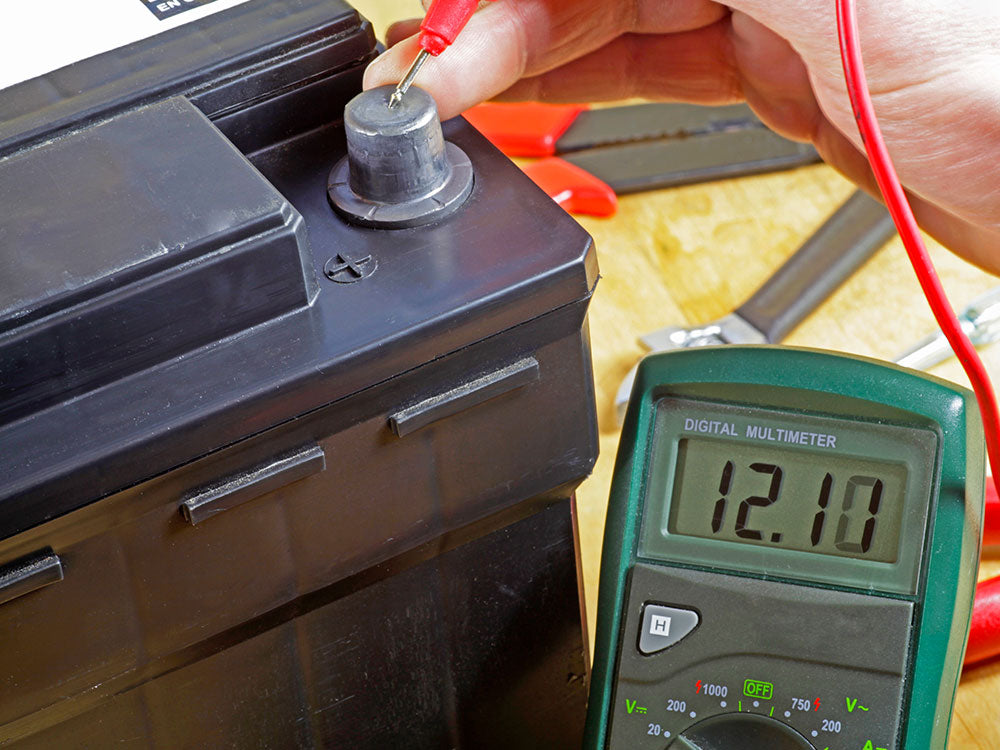Table of Content
1. Introduction
At some point, every motorcyclist has got to charge the motorcycle battery. Without a working motorcycle battery, it does result in problems like the headlights, indicators, and backlight not functioning properly, and in the worst-case scenario, total failure of the motorcycle’s ignition system.
Before you charge your motorcycle battery, there are things you need to check beforehand:
- Check the battery terminals (both positive and negative) and whether they have any residue on them or not. Because if your motorcycle is left alone for a long time, the battery terminals start to accumulate rust or some kind of dry powder due to the battery acid drying out at the battery terminals which could damage the clamps attached to the battery.

- Check whether the battery is dead or not using a multimeter

- Check the type of motorcycle battery used, this will help tell you what type of charger you need.
Here is a list of types of motorcycle batteries:
Wet Cell Battery:
The most common type of motorcycle battery is also known as a lead-acid battery. The wet cell battery’s cells are filled with acid.
Dry Cell Battery:
Commonly known as a maintenance-free battery, a dry cell battery is more durable and expensive than the traditional lead-acid battery.
Gel Battery:
Also a type of maintenance-free battery, the gel battery has a special form of silica gel that helps to suspend and keep the electrolytes together. It is also very durable and can be placed in any direction.
2. Methods of Charging a Motorcycle Battery
2.1 Using a Battery Charger
Before using a battery charger, it is important to know that the trickle, float, or smart charger works well with almost every battery, except the lithium battery. Smart chargers are the safest to use for charging a motorcycle battery because they monitor the charging progress and minimize damage to the battery.
Here is an example of a smart charger:

Here is an example of a trickle charger:

Here is an example of a float charger:

2.2 Jump Start the Battery
This method is recommended if a charger is not available on the spot. For this method to work, another working car or motorcycle and jumper cables are required. This method is similar to jump-starting a car battery.

- Connect the positive terminal of the dead battery to the positive terminal of the working car/motorcycle battery with the jumper cables’ red clamp.
- Connect one end of the jumper cables’ black clamp with the negative terminal of the working car/motorcycle battery and the other end with the frame of the motorcycle with the dead battery.
- Start the motorcycle/car with the working battery, it will help transfer energy to the dead battery.
- If the battery still does not work, it means the battery is totally drained and must be charged using an external charging source.
Here is a quick tutorial for jump-starting a motorcycle.
2.3 Push-Start
The simplest method, push-starting can be helpful in cases when the motorcycle’s ignition refuses to start. Here are the steps for applying the push-start method:

- Put the motorcycle in second or third gear.
- Press the clutch and push the motorcycle forward.
- When the motorcycle gets a little speed then suddenly releases the clutch.
- Try not to do this in first gear because pushing a motorcycle in first gear need more force and it can also cause damage to the teeth of the gear.
Here is a tutorial for push-starting your motorcycle:
3. Conclusion
Charging your motorcycle battery should be a top priority, especially on TOURING bikes and CRUISERS. It is difficult to push-start this kind of vehicle because of its heavy weight. However, if the motorcycle has SADDLEBAGS or a TRUNK, the rider can easily carry a spare battery or transport jumper cables in the LUGGAGE RACKS, TAIL BAGS, or TANK BAGS.
All these extra motorcycle accessories can easily be bought from ONLINE STORES.















Leave a comment
All comments are moderated before being published.
This site is protected by hCaptcha and the hCaptcha Privacy Policy and Terms of Service apply.